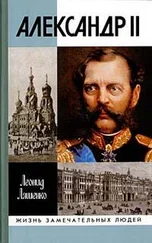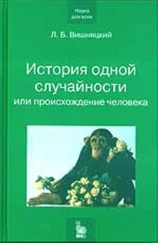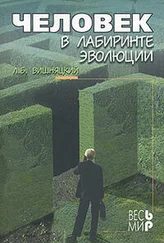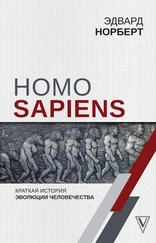Tzedakis P. C., Hughen K. A., Cacho I., Harvati K. Placing late Neanderthals in a climatic context // Nature. 2007. N 449. P. 206–208.
Ullrich H. Manipulations on human corpses, mortuary practice and burial rites in Palaeolithic times // V. Novotny, Mizerova (eds). Fossil Man. New Facts, New Ideas. Brno: Anthropos Institute, 1986. P. 227–236.
Underdown S. A potential role for transmissible spongiform encephalopathies in Neanderthal extinction // MH. 2008. N 71. P. 4–7.
Urbanowski M., Socha P., Dąbrowski P., Nowaczewska W., Sadakierska-Chudy A., Dobosz T., Stefaniak K., Nadachowski A. The first Neanderthal tooth found North of the Carpathian Mountains // Naturwissenschaften. 2010. N 97. P. 411–415.
Vacca E., Pesce Delfino V. Three-Dimensional topographic survey of the human remains in Lamalunga Cave (Altamura, Bari, Southern Italy) // Collegium Anthropologicum. 2004. N 28. P. 113–119.
Vallois H. V. Vital statistics in prehistoric populations as determined from archaeological data // R. Heizer and S. F. Cook (eds). The Application of Quantitative Methods in Archaeology. Chicago: Quadrangle, 1960. P. 186–222.
Valoch K. Beitrag zur Kenntnis des Pavlovien // Archeologické rozhledy. 1981. N 33. P. 279–298.
Van,el T. H., Tzedakis P. C. Palaeolithic landscapes of Europe and environs, 150,000–25,000 years ago: An overview // QSR. 1996. N 15. P. 481–500.
Vandermeersch B. L’Extinction des Néandertaliens // L’Homme de Néandertal. Vol. 7. L’Extinction. Liège: ERAUL, 1989. P. 11–21.
Vandermeersch B. Ce que nous apprennent les premières sépultures // CRP. 2006. N 5. P. 161–167.
Vandermeersch B., Trinkaus E. The postcranial remains of the Regourdou 1 Neandertal: the shoulder and arm remains // JHE. 1995. N 28. P. 439–476.
Verna C., Grimes V., Toussaint M., Hublin J.-J., Richards M. Tracing Neandertal movement and mobility using strontium isotope analysis: case studies from Belgium // PA. 2010. A35.
Verneau R. La race de Neanderthal et la race de Grimaldi; leur role dans l’humanite // JRAI. 1924. N 54. P. 211–230.
Villa P., Lenoir M. Hunting and hunting weapons of the Lower and Middle Paleolithic of Europe // J.-J. Hublin, M. P. Richards (eds). The Evolution of Hominin Diets: Integrating Approaches to the Study of Palaeolithic Subsistence. Springer, 2009. P. 59–85.
Voisin J.-L. Krapina and other Neanderthal clavicles: A peculiar morphology? // PB. 2006a. N 108. P. 331–339.
Voisin J.-L. Speciation by distance and temporal overlap: a new approach to understanding Neanderthal evolution // R. Harvati, T. Harrison (eds). Neanderthals Revisited: New Approaches and Perspectives. Dordrecht: Springer, 2006b. P. 299–314.
Wainer K., Genty D., Blamart D., Hoffmann D., Couchoud I. A new stage 3 millennial climatic variability record from a SW France speleothem // PPP. 2009. N 271. P. 130–139.
Walker M. J., Lombardi A. V., Zapata J., Trinkaus E. Neandertal mandibles from the Sima de las Palomas del Cabezo Gordo, Murcia, Southeastern Spain // AJPA. 2010. N 142. P. 261–272.
Weaver T. D. The shape of the Neandertal femur is primarily the consequence of a hyperpolar body form // PNAS. 2003. N 100. P. 6926–6929.
Weaver T. D. The meaning of Neandertal skeletal morphology // PNAS. 2009. N 106. P. 16026–16033.
Weaver T. D., Hublin J.-J. Neandertal birth canal shape and the evolution of human childbirth // PNAS. 2009. N 106. P. 8151–8156.
Weaver T. D., Roseman C. C. New developments in the genetic evidence for modern human origins // EA. 2008. N 17. P. 69–80.
Weaver T. D., Steudel-Numbers K. Does climate or mobility explain the differences in body proportions between Neandertals and their Upper Paleolithic successors? // EA. 2005. N 14. P. 218–223.
Weaver T. D., Roseman C. C., Stringer C. B. Were neandertal and modern human cranial differences produced by natural selection or genetic drift? // JHE. 2007. N 53. P. 135–145.
Weidenreich F. The «Neanderthal Man» and the ancestors of « Homo sapiens » // AA. 1943. N 45. P. 39–48.
Weidenreich F. Facts and speculations concerning the origin of Homo sapiens // AA. 1947. N 49. P. 187–203.
Weinstein K. J. Thoracic morphology in Near Eastern Neandertals and early modern humans compared with recent modern humans from high and low altitudes // JHE. 2008. N 54. P. 287–295.
Weniger G.-C. Wie modern Waren Neanderthaler // EAn. 2008. N 14. P. 1–18.
White M. J. Things to do in Doggerland when you’re dead: surviving OIS3 at the northwestern-most fringe of Middle Palaeolithic Europe // WA. 2006. N 38. P. 547–575.
White T. D., Toth N. The question of ritual cannibalism at Grotta Guattari // CAn. 1991. N 32. P. 118–138.
White T. D., Asfaw B., DeGusta D., Gilbert H., Richards G. D., Suwa G., Howell F. C. Pleistocene Homo sapiens from Middle Awash, Ethiopia. Nature. 2003. N 423. P. 742–747.
Williams M. A. J., Ambrose S. H., Kaars S. van der, Ruehlemann C., Chattopadhyaya U., Pal J., Chauhan P. R. Environmental impact of the 73 ka Toba super-eruption in South Asia // PPP. 2009. N 284. P. 295–314.
Wolpoff M. H. How Neandertals inform human variation // AJPA. 2009. N 139. P. 91–102.
Wolpoff M. H., Frayer D. W. Unique ramus anatomy for Neandertals? // AJPA. 2005. N 128. P. 245–251.
Wolpoff M. H., Mannheim B., Mann A., Hawks J., Caspari R., Rosenberg K. R., Frayer D. W., Gill G. W., Clark G. Why not the Neandertals? // WA. 2004. N 36. P. 527–546.
Wood B. Human Evolution: A Very Short Introduction. New York: Oxford University Press, 2005.
Wood B., Lonegran N. The hominin fossil record: taxa, grades and clades // JA. 2008. N 212. P. 354–376.
Wynn T., Coolidge F. L. The expert Neandertal mind // JHE. 2004. N 46. P. 467–487.
Wynn T., Coolidge F. L. A Stone-Age meeting of minds // AS. 2008. N 96. P. 44–51.
Yokoyama Y., Falguères C., Sémah F., Jacob T., Grün R. Gamma-ray spectrometric dating of late Homo erectus skulls from Ngandong and Sambungmacan, Central Java, Indonesia // JHE. 2008. N 55. P. 274–277.
Zängl U. Hermann Schaaffhauzen (1816–1893) and the Neanderthal finds of the 19 thcentury // R. W. Schmitz (ed). Neanderthal 1856–2006. Mainz am Rhein: Verlag Philipp von Zaibern, 2006. P. 45–53.
Zhivotovsky L. A., Rosenberg N. A., Feldman M. W. Features of evolution and expansion of modern humans, inferred from genomewide microsatellite markers // AJHG. 2003. N 72. P. 1171–1186.
Zilhão J. Burial evidence for the social differentiation of age classes in the Tarly Upper Paleolithic // D. Vialou, J. Renault-Miskovsky, M. Patou-Mathis (dir). Comportements des hommes du Paléolithique moyen et supérieur en Europe: territoires et milieux. Liège: ERAUL, 2005. P. 231–241.
Zilhão J. Neandertals and moderns mixed, and it matters // EA. 2006. N 15. P. 183–195.
Zilhão J. The Emergence of ornaments and art: An archaeological perspective on the origins of “behavioral modernity” // JArR. 2007. N 15. P. 1–54.
Zilhão J., Angelucci D. E., Badal-Garcíac E., d’Errico F., Daniel F., Dayet L., Douka K., Higham T. F. G., Martínez-Sánchez M. J., Montes-Bernárdez R., Murcia-Mascarós S., Pérez-Sirvent C., Roldán-García C., Vanhaeren M., Villaverde V., Wood R., Zapata J. Symbolic use of marine shells and mineral pigments by Iberian Neandertals // PMAS. 2010. N 107. P. 1023–1028.
Читать дальше








